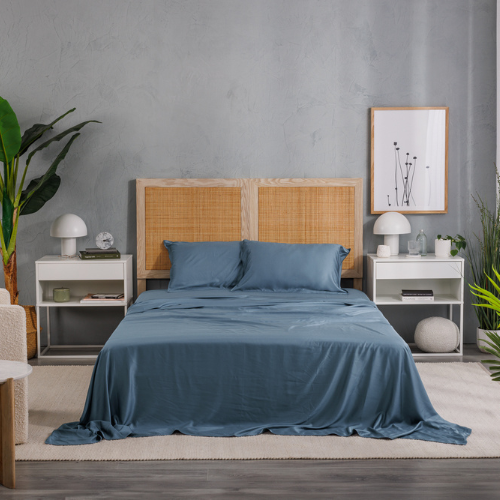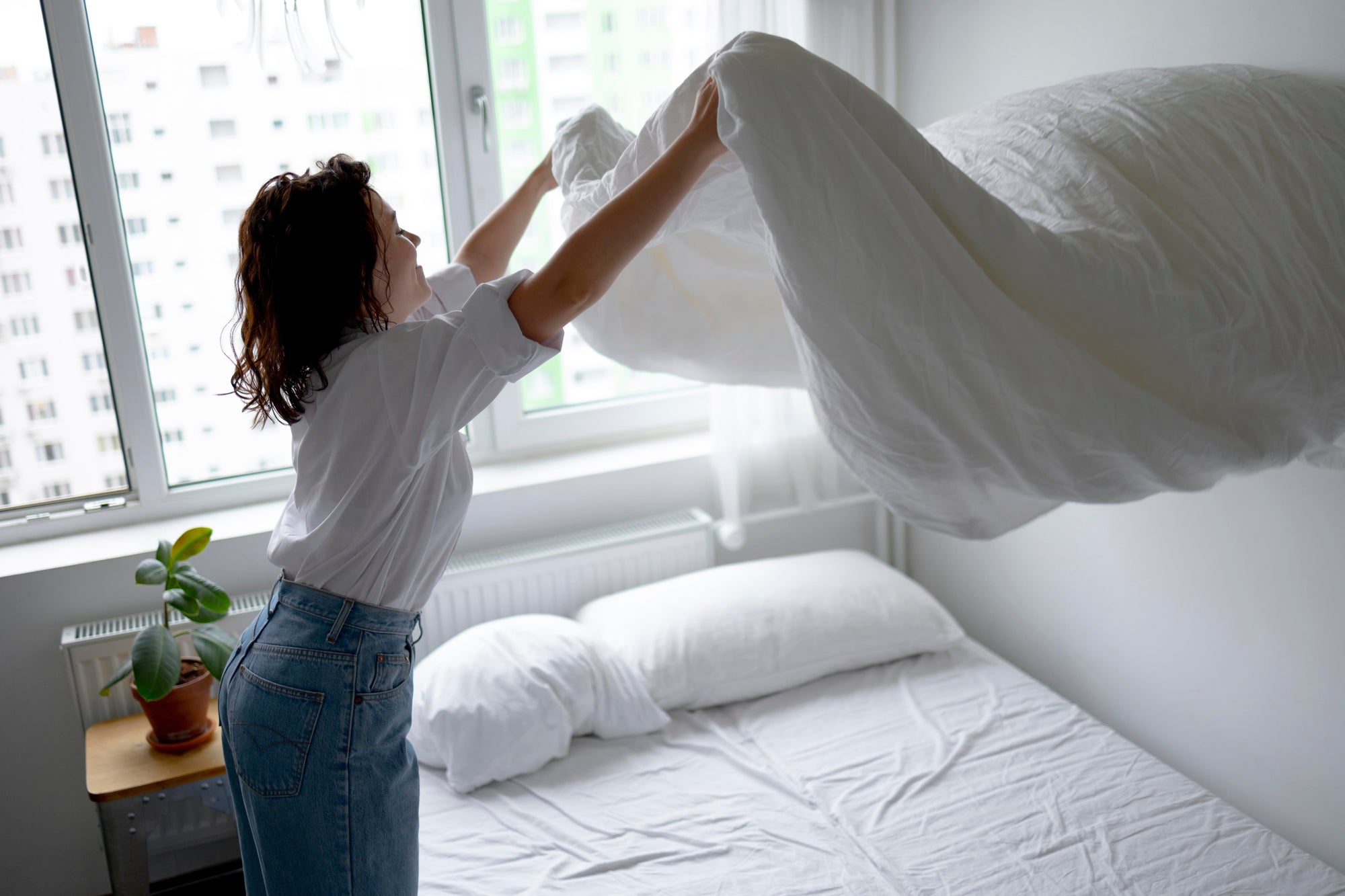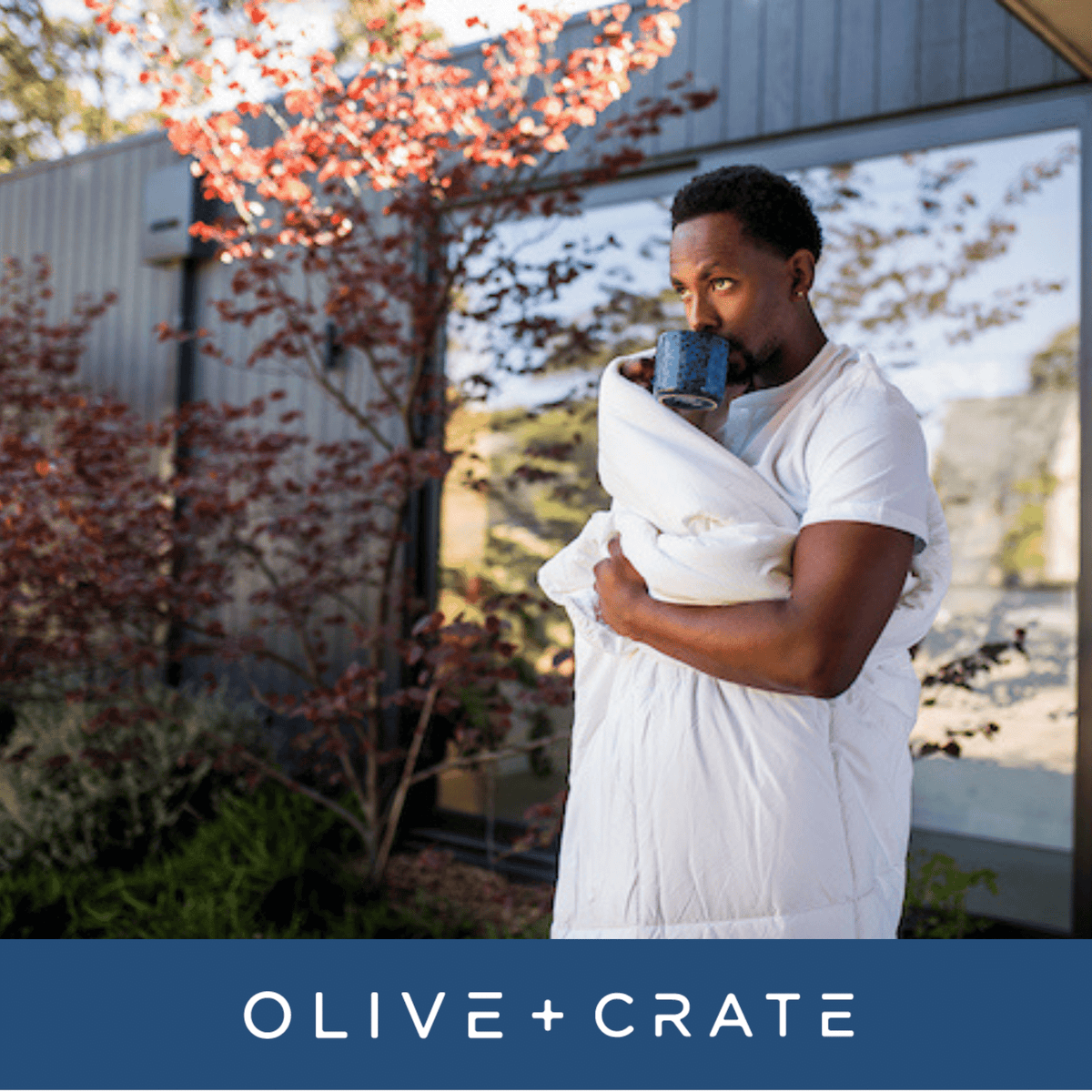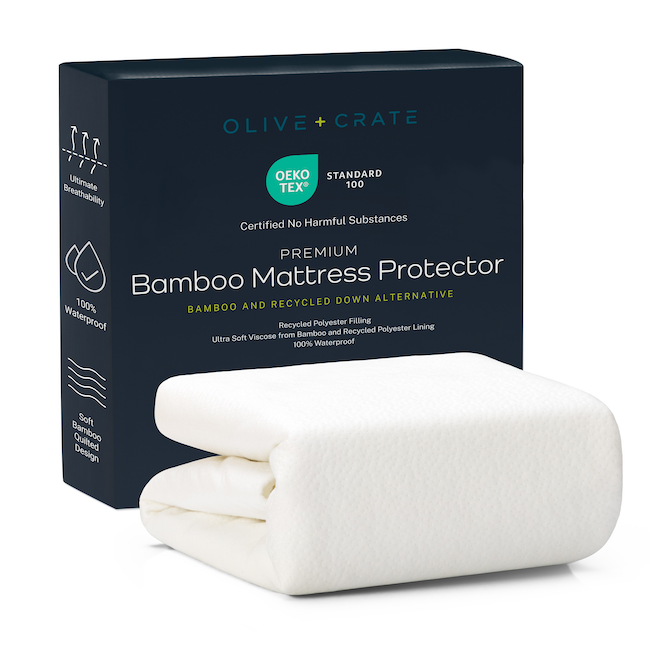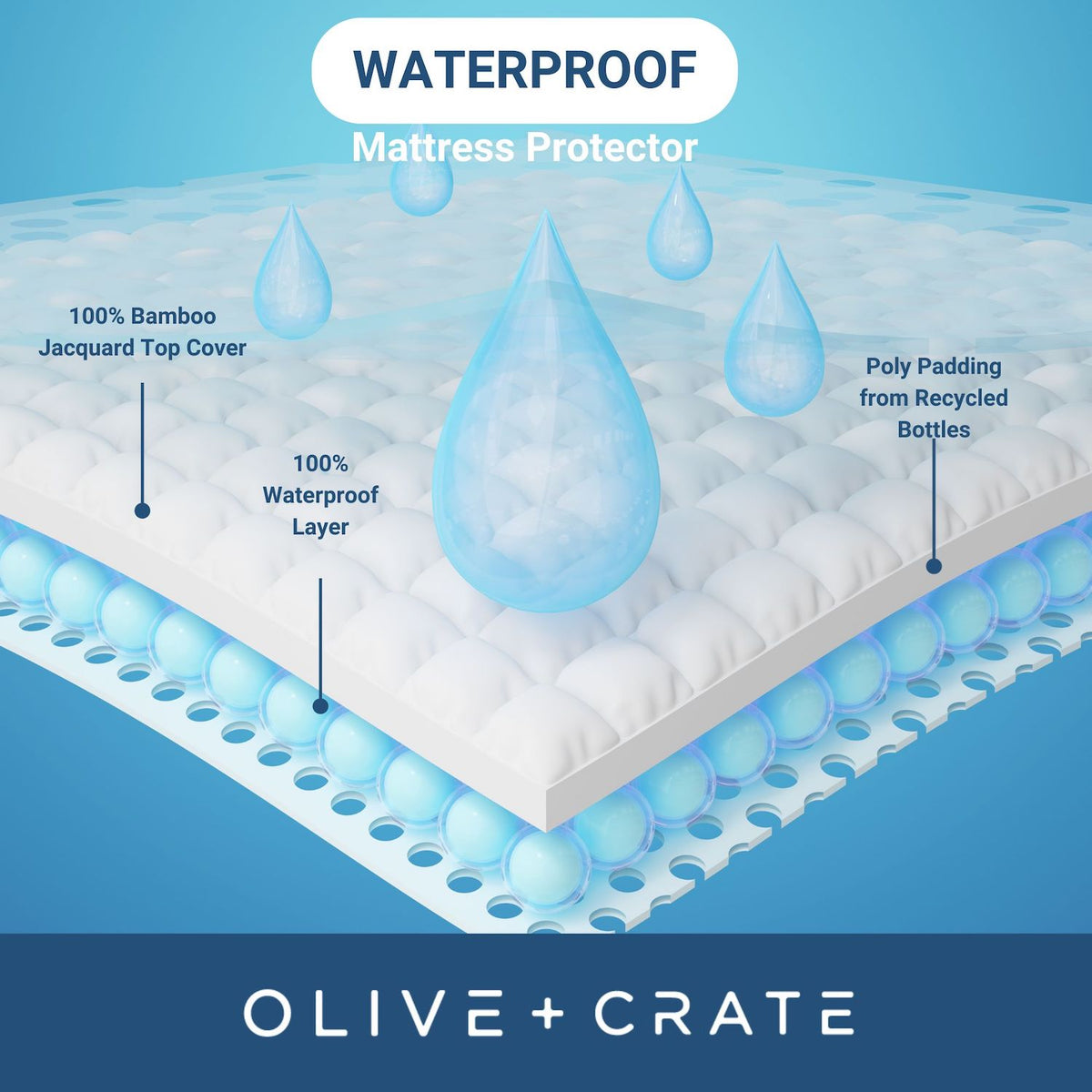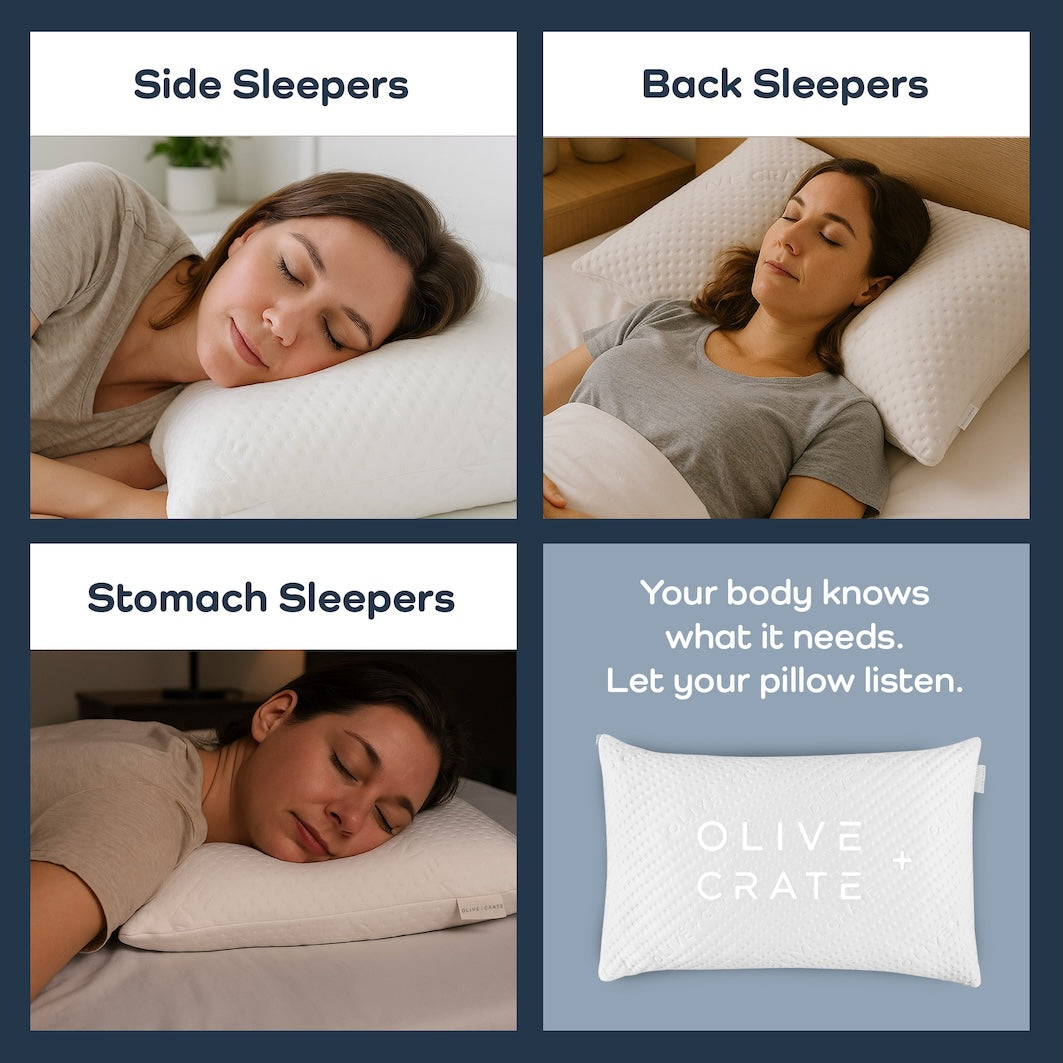Tired of waking up in a sweat-soaked mess? If you're a hot sleeper, you know the struggle is real. The right sheets can make all the difference, and that usually means choosing natural, breathable options like percale cotton, linen, bamboo, and TENCEL™. These fabrics are champions at letting air flow and pulling moisture away from your body, keeping you cool and comfortable all night long.
Why Your Sheets Are Making You Overheat
Your bed sheets are your first line of defense against those miserably hot, sticky nights. The problem often starts with the fabric itself and its inability to handle heat and moisture. Many common materials, especially synthetics like polyester or even a dense sateen weave, can act like a personal insulator, trapping your body heat right next to your skin.
This essentially creates a stuffy, humid little bubble under the covers. Instead of letting that heat escape, the fabric holds on to it, making your body temperature climb and kicking off a cycle of night sweats. Breaking this cycle isn't just about finding a "cooler" sheet—it's about understanding what makes a fabric work for, not against, your body.
The Science of Cool Sleep
Sheets that truly keep you cool work in two main ways:
- Breathability: This is all about airflow. Think of it as ventilation for your bed. A weave with more space for air to pass through, like the crisp grid of percale, allows hot air to move away from your body instead of getting trapped.
- Moisture-Wicking: This is the fabric's talent for pulling sweat off your skin and spreading it across the surface so it can evaporate quickly. It's an active process that helps you stay dry.
The magic happens when a fabric does both of these things well. It won't just feel cool when you first climb into bed; it will actively help regulate your temperature all through the night. Let's dive into the fabrics that have perfected this balancing act.
Exploring the Top Natural Cooling Fabrics
If you're on the hunt for sheets that will finally put an end to sweaty nights, your best bet is to look at natural materials. These fibers are Mother Nature's answer to temperature control, designed to manage moisture and promote airflow long before "performance fabrics" were a thing. They’re simply perfect for creating a cool, comfortable bed.
Let's dive into the top contenders that consistently get rave reviews from hot sleepers.

The Crisp Champion: Percale Cotton
When we talk about percale, it's not so much about the cotton itself but the specific way it’s woven. Using a simple one-thread-over, one-thread-under grid pattern, this technique creates a light, crisp fabric that feels like you're sleeping on the "cool side of the pillow" all night long.
That unique weave is its secret weapon. The tiny spaces it creates allow air to circulate freely, which stops heat from getting trapped around your body while you sleep. If you're someone who loves that classic, cool-to-the-touch feel of luxury hotel sheets, percale is an amazing choice that delivers on both performance and price.
The Breathable King: Linen
For anyone living in humid climates or dealing with serious night sweats, linen is an absolute game-changer. It's made from the fibers of the flax plant, which are naturally hollow. This structure allows for incredible airflow and a level of breathability that other fabrics just can't match.
Linen is also a powerhouse when it comes to wicking moisture. In fact, it can absorb about 20% more moisture than cotton and dries out significantly faster, making it the clear winner for staying dry and comfortable. Yes, it has a higher price point and a tendency to wrinkle, but its sheer cooling power and durability are second to none.
Pro Tip: Don't judge linen sheets on the first touch. They have a reputation for getting softer and more luxurious with every single wash, so their long-term comfort is well worth the initial investment.
The Silky Smooth Operator: Bamboo Viscose
Fabrics derived from bamboo, often labeled as bamboo viscose or rayon, have become incredibly popular lately, and for good reason. They have a silky, smooth texture that drapes beautifully over the body, giving you a touch of luxury without trapping any heat. To get the full picture, it's worth understanding the nature and benefits of bamboo fiber itself.
This material is also exceptionally absorbent, pulling moisture away from your skin to keep you feeling dry and fresh all night. It’s a fantastic alternative for sleepers who find traditional cotton a bit too crisp but still need powerful temperature regulation.
Here’s a quick breakdown to help you decide:
- Percale Cotton: The go-to for anyone who loves a crisp, cool, and breathable sheet without breaking the bank.
- Linen: The ultimate choice for maximum airflow and moisture-wicking, especially if you live somewhere humid.
- Bamboo Viscose: Perfect for those who crave a silky-soft, drapey feel paired with excellent absorbency.
Each of these natural fabrics offers a distinct path to a cooler, more restful night. Ultimately, your personal preference for texture—whether you like it crisp or silky—will probably be the deciding factor. For an even deeper dive, be sure to check out our ultimate guide to cooling bed sheets for hot sleepers.
A Practical Comparison of Cooling Sheet Fabrics
Trying to pick out new sheets can feel like a maze of buzzwords and conflicting advice. But once you cut through the noise, it really just boils down to how different fabrics actually perform when you’re trying to sleep. For hot sleepers, the perfect choice is always a balance between breathability, feel, and price.
To make things easier, let's look at how the top contenders really stack up on the things that matter for a cool, comfortable night.

This visual shows you the unique strengths of each material at a glance, making it much easier to see the trade-offs between something like crisp cotton and silky-smooth bamboo.
Interpreting The Trade-Offs
One of the biggest factors for staying cool is breathability, which is all about how well your sheets let heat escape. Cotton, especially a percale weave with a thread count between 180 to 200, is fantastic for this. Its crisp, light structure maximizes airflow, helping your body's natural cooling process. Plus, it usually costs 15-30% less than other luxury options.
Linen is another powerhouse, offering unmatched cooling and moisture absorption, which makes it a dream in humid weather. The catch? It comes with a higher price tag and a naturally wrinkly texture that isn't for everyone. Bamboo, on the other hand, gives you that silky, smooth feel and manages moisture incredibly well, though it might not be quite as durable as high-quality cotton or linen over the long haul.
It all comes down to what you prioritize. If you love a crisp feel and great value, percale cotton is a clear winner. If you need maximum airflow and don’t mind a few wrinkles, linen is unbeatable.
Cooling Sheet Fabric Comparison Guide
When you're shopping for cooling sheets, the fabric makes all the difference. This table breaks down the key characteristics of the most popular materials to help you find the perfect match for your sleep style and budget.
| Fabric Type | Breathability | Moisture-Wicking | Feel/Texture | Durability | Average Cost |
|---|---|---|---|---|---|
| Cotton (Percale) | Excellent | Moderate | Crisp, light, airy | High | $$ |
| Linen | Exceptional | High | Textured, breathable, softens over time | Very High | $$$$ |
| Bamboo (Viscose/Rayon) | Very Good | Excellent | Silky, smooth, soft | Moderate | $$$ |
| Eucalyptus (Tencel) | Excellent | Exceptional | Cool-to-the-touch, silky, drapes well | High | $$$ |
| Microfiber (Polyester) | Low | Low to Moderate | Soft, smooth | High | $ |
Ultimately, understanding these practical differences is what matters. By matching your personal needs—from budget to texture—to the right fabric, you'll finally get that cool, restorative sleep you've been dreaming of.
For more tailored advice, you might find our guide on how cooling sheets can help with night sweats especially helpful.
Looking Beyond Fabric to Weave and Thread Count
Choosing the right material is a great start, but the real secret to finding the best sheet fabric for hot sleepers often comes down to the construction—how the fabric is actually made.
A lot of shoppers get tripped up by thread count, thinking a higher number automatically means better, cooler sheets. I’ve seen it a thousand times. But when it comes to sleeping cool, the opposite is often true.
Think of it this way: thread count is just a measure of how many threads are packed into one square inch. When that number gets too high, say an 800 thread count, the weave becomes incredibly dense. There’s simply no room for air to move, and that’s a recipe for a sweaty night. On the flip side, a 200 thread count sheet can feel beautifully airy and breathable.
Why Weave Trumps Thread Count
How those threads are interlaced—the weave—has a much bigger impact on breathability than just the count alone. You'll mainly run into two types: percale and sateen. For a hot sleeper, they are worlds apart.
- Percale Weave: This is your best friend. It’s a classic one-thread-over, one-thread-under grid pattern. This simple structure creates a crisp, lightweight fabric that lets air flow freely, making it the clear winner for preventing heat buildup.
- Sateen Weave: This weave uses a three or four-threads-over, one-thread-under pattern. While this results in that silky, smooth finish people love, the tighter structure is a heat trap. It’s far less breathable than percale.
For anyone who runs hot at night, choosing a percale weave is practically a non-negotiable. Its open design is tailor-made for ventilation.
A lower-thread-count percale sheet will almost always sleep cooler than a high-thread-count sateen sheet, even if they are both made from the exact same cotton. It’s all about giving heat an escape route.
Here's another small but practical tip I always share: opt for lighter colors. Dark sheets tend to absorb more ambient heat from sunlight during the day and can retain some of that warmth into the night. It’s a subtle effect, but every little bit helps in the quest for a cool night's sleep. Understanding these finer points is crucial to knowing how cooling sheets help regulate your body temperature and finally getting some relief.
How to Choose the Right Sheets for You

Alright, you've got the rundown on materials and weaves. Now comes the fun part: putting that knowledge to use and picking the perfect sheets for you. This final step is all about matching the facts to your personal sleep style and environment. A few practical questions will help you zero in on the best choice.
First, let's talk texture. What do you want to feel when you slide into bed? If you love the crisp, cool feel of a high-end hotel bed, percale cotton is almost certainly your best bet. But if you're craving something with a silky, smooth drape against your skin, you'll find that bamboo or TENCEL™ feels far more luxurious.
Factors Beyond Fabric Feel
Your sleep environment plays a huge role here, too. Someone in a dry climate has different needs than a person in a humid one, where linen's incredible moisture-wicking ability really gets a chance to shine.
Before you make a final decision, here are a few last things to check off your shopping list:
- Look for Key Certifications: Keep an eye out for the OEKO-TEX STANDARD 100 label. This is a big deal. It means the sheets have been tested and are free from harmful levels of over 100 substances known to be bad for your health.
- Check the Return Policy: A good return policy is non-negotiable when you're investing in quality bedding. It gives you the peace of mind to actually test the sheets and make sure they're the right fit for your sleep.
- Set a Realistic Budget: High-quality sheets are an investment in your rest, but that doesn't mean you have to break the bank. There are fantastic options at various price points.
By focusing on your personal preferences for feel, considering your climate, and keeping these key shopping details in mind, you can confidently choose the best sheet fabric and finally get those restful nights you deserve.
Still Have a Few Lingering Questions?
After digging into different materials and weaves, a few key questions almost always pop up. Getting those answered is the last step before you can confidently pick the best sheet fabric for hot sleepers. Let’s clear up the most common ones.
Is 100% Cotton a Guaranteed Win for Cooling?
Not quite. While cotton is a fantastic, breathable natural fiber, the weave is what really makes or breaks its cooling power. Think of a percale weave as a simple grid—this structure leaves plenty of room for air to move, making it incredibly light and crisp. It’s a hot sleeper’s best friend.
On the flip side, you have the sateen weave. Even if it's 100% cotton, its silky-smooth feel comes from a tighter, denser construction that traps body heat. That’s the last thing you want on a warm night. So, if you're set on cotton, always go for percale.
What's the Real Difference Between TENCEL™ and Bamboo?
This is a great question since both are famous for being soft, cool, and smooth. They’re actually both types of rayon, which means they’re made from wood pulp. But how they're made—and how they perform—is where they differ.
TENCEL™ Lyocell is made using an award-winning "closed-loop" process. This system recycles nearly all the water and solvents used, making it incredibly sustainable. The final fabric is known for being exceptionally smooth, durable, and a powerhouse at wicking away moisture. Bamboo processing, in contrast, can sometimes rely on harsher chemicals.
While you'll likely sleep cool with either, TENCEL™ is widely seen as the more premium and environmentally-friendly option.
Do Cooling Sheets Actually Need Special Care?
Yes, and taking proper care of them is the secret to making them last. For natural fibers like cotton and linen, stick to cool or warm water and a mild detergent. The biggest enemy here is high heat, which can damage the fibers over time. Tumble dry on a low setting, or even better, line dry them if you can.
Materials like TENCEL™ and bamboo also thrive with gentle care, which helps maintain their signature softness and moisture-wicking magic. Before that first wash, always give the manufacturer's care tag a quick look. A few extra minutes of care can mean years of cool, comfortable sleep.
Ready to feel the cool, breathable difference of eucalyptus for yourself? Olive + Crate crafts premium bedding from TENCEL™ fibers, all designed to give you a better night's sleep. Discover our collection today.


